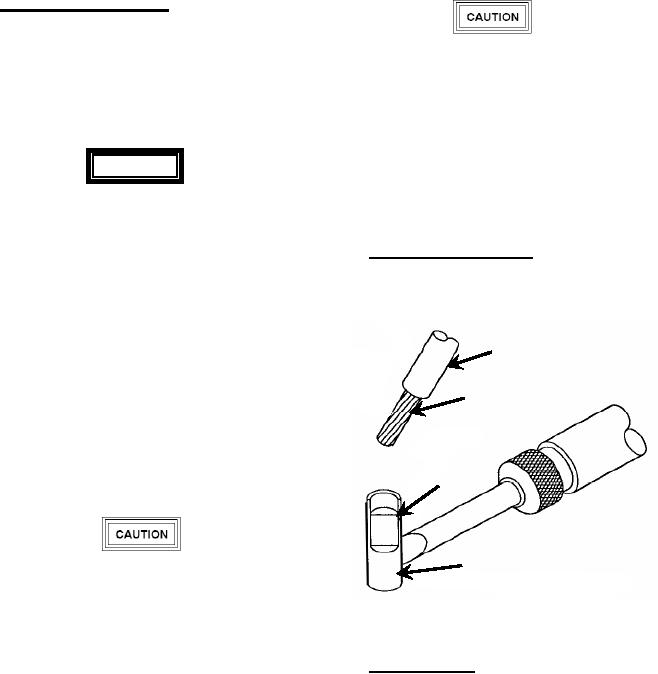
NAVAIR 01-1A-505-3
TO 1-1A-14-3
TM 1-1500-323-24-3
009 02
1 September 2011
Page 7
18. CONNECTOR BUILDUP.
19. For additional detailed information concerning
soldering procedures and solder type connectors refer
The use of lead-free solder in place of tin-
to NAVAIR 01-1A-505-1, WP 016 00.
lead solder is expressly prohibited as part of
any of the repair processes addressed
20. UNSOLDERING CONDUCTOR WIRE
throughout this technical manual. Any
FROM CONTACT.
contamination of a lead-free assembly with
tin-lead solder may significantly reduce the
WARNING
reliability of the assembly.
Use extreme care not to damage contacts or
Safety glasses shall be worn during all wire
adjacent wires.
cutting, stripping, and soldering operations.
21. Removing Conductor Wire. Apply heat to solder
Solder contains lead and other hazardous
cup using soldering iron until solder melts; then
materials. Avoid oral contact with hands
remove wire (Figure 3).
during soldering operations and always wash
hands immediately after soldering.
Insulation
Become familiar with Material Safety Data
sheets (MSDS) for all materials used and use
proper personal protection equipment (PPE).
Conductor
Under no circumstances will either acid flux
or inorganic chloride flux, whether as liquids
or as flux-core solders, be used for securing
connections on electrical or electronic
Solder
equipment.
Contact Solder
When heating contacts of DEJ-9MS
connectors, a heat sinking device must be
attached to the solder cup of the connector
Figure 3. Conductor Wire Removal
contact. Failure to do so can result in
damage to the connector filter.
22. Removing Solder.
Repair of lead-free circuit cards is NOT
a. Remove solder from solder cup by wicking
permitted.
with a stranded conductor or braided shield and liquid
flux.
b. When wicking with stranded conductor or
braided shield place wire on soldered connection and
apply heat using soldering iron (Figure 4).

